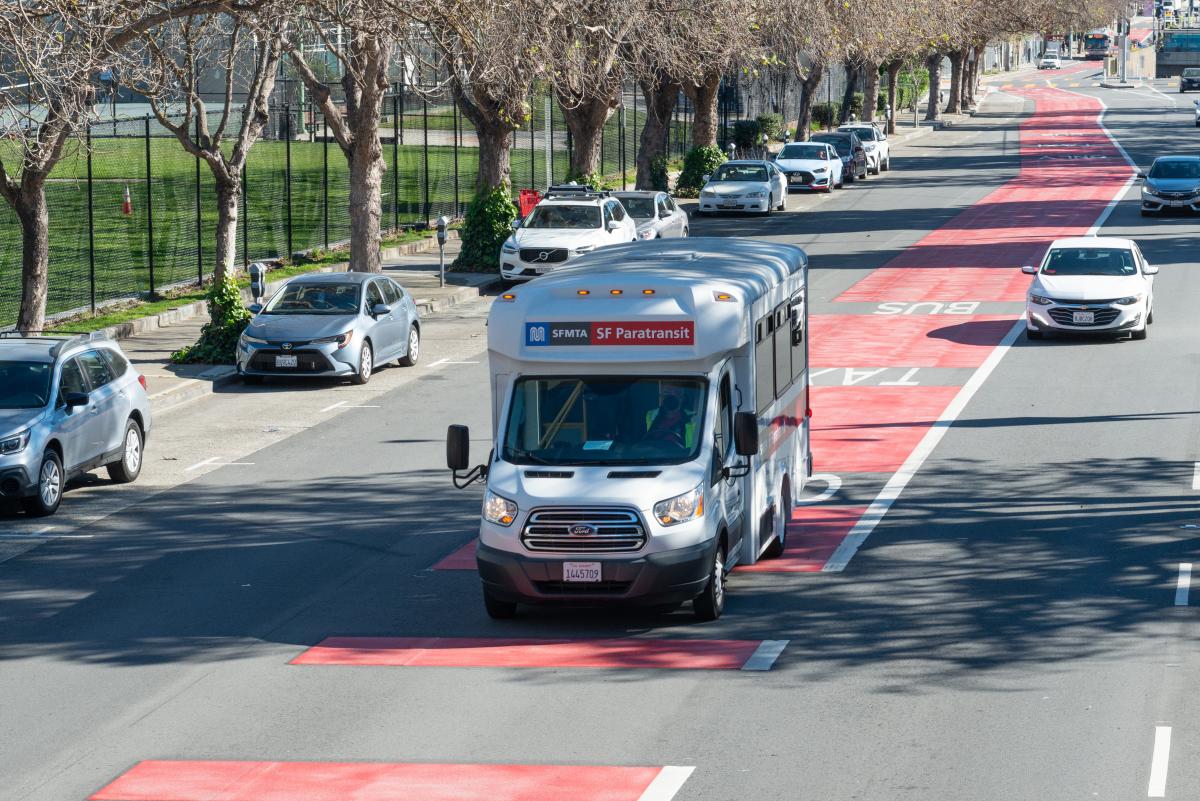What's in Proposition L?
 San Francisco's voter-approved half-cent sales tax for transportation generates approximately $100 million annually for improvements like new buses and light rail vehicles, street paving, bike lanes, safety improvements for people walking and more. The San Francisco Transportation Authority administers the half-cent sales program according to an Expenditure Plan.
San Francisco's voter-approved half-cent sales tax for transportation generates approximately $100 million annually for improvements like new buses and light rail vehicles, street paving, bike lanes, safety improvements for people walking and more. The San Francisco Transportation Authority administers the half-cent sales program according to an Expenditure Plan.
The San Francisco Board of Supervisors placed Proposition L on the November 2022 ballot to approve a new 2022 Transportation Expenditure Plan and extend the existing half-cent sales tax for transportation for 30 years to fund the new plan.
Proposition L does not raise the city’s sales tax level and requires two-thirds majority approval by San Francisco voters before it can be enacted. The funds are distributed among several transportation agencies, including BART, the SFMTA and Caltrain.
On average, every dollar in half-cent sales tax funding attracts $4 – $7 in additional funding from federal, state, or other sources. The sales tax has funded projects large and small, some of the well-known ones being the Salesforce Transit Center, the electrification of Caltrain (anticipated to be done in 2024), Muni Central Subway and the reconstructing Doyle Drive, now known as Presidio Parkway.
It also funds traffic calming, street repaving projects, paratransit service for seniors and people with disabilities, protected bike lanes, new and upgraded signals and, during the pandemic, taxi rides home for essential workers.
The half-cent sales tax was first approved by San Francisco voters in 1989. Voters continued the half-cent sales tax in 2003 with the adoption of a new Transportation Expenditure Plan, which is currently in place. If Measure L were to be approved, it would replace the existing Expenditure Plan.
What is in the Transportation Expenditure Plan?
The 2022 Transportation Expenditure Plan will help deliver safer, smoother streets and more reliable transit; support paratransit services for seniors and people with disabilities; reduce congestion and improve air quality. It invests approximately $2.6 billion over 30 years in the following areas:
- 41% for transit maintenance and enhancements
- 23% for major transit projects
- 19% for streets and freeways
- 11% for paratransit
- 6% for system planning and community equity
The Transportation Expenditure Plan includes funding for:
-
Neighborhood-level investments such as crosswalks, traffic calming, new and upgraded traffic signals, bicycle lanes and Safe Routes to School programs.
-
Citywide improvements like electrifying Muni’s bus fleet, transit signal priority, maintaining buses and trains so they operate safely and reliably and increasing capacity on both Muni and BART to reduce crowding
-
Implementing improvements identified in community-based plans across the city and particularly in Equity Priority Communities
-
Major projects like the Downtown Caltrain Extension, bringing Caltrain to the Salesforce Transit Center
-
Why Now?
There are several reasons the city is working on a new Transportation Expenditure Plan for the half-cent transportation sales tax:
-
All but one of the major capital projects in the current plan are done or under construction.
-
Several programs have advanced funds to enable early benefits and are now running out of money.
-
The sales tax provides an important source of funding for projects that can support the city’s economic recovery and maintain or create jobs.
-
San Francisco has new and emerging transportation priorities that are being developed by our countywide plan update, the San Francisco Transportation Plan 2050.
-
A new Transportation Expenditure Plan allows us to use sales tax as seed funding for planning and project development, and to serve as the local match needed to secure federal, state, and other grant funding.
For more information about the transportation sales tax, see the San Francisco County Transportation Authority website.
